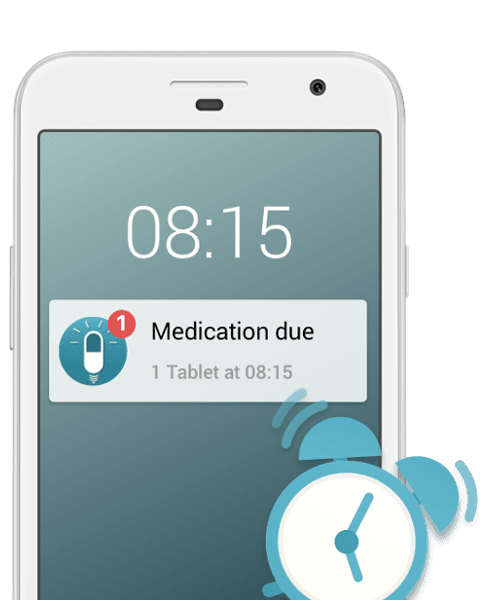For people living with chronic diseases, be it multiple sclerosis, arthritis, or any number of other conditions, reduced physical mobility can cause problem when it comes to everyday tasks around the home. However, the rise of ‘smart’ homes – in which household items become connected – can greatly improve accessibility and be life-changing for people living with disabilities. Here’s how.
Jargon breakdown:
- Smart devices: An item that connects to other devices or networks, usually allowing them to be controlled via a smartphone
- Bridge: A device that connects to multiple items of the same nature (such as light bulbs) allowing them to be controlled from a single point
- Hub: A device that connects to different smart devices produced by a range of manufacturers, allowing for more streamlined control
- Smart speaker: A speaker that connects to other devices, your phone, or network. The built-in microphone creates the opportunity for voice control
- Automation service: Software that allows you to automate the behavior of smart devices based on conditional statements. For example, have a light come on if a motion sensor detects a person in the room
What are Smart Homes?
You may have heard of the ‘Internet of Things’. It refers to physical objects – from cars to watches to household appliances – that have connectivity built in. These objects are often referred to as being smart devices.
A growing number of regular household items such as light bulbs and door locks are becoming smart, one of the major benefits being that they can be controlled with your computer or smartphone – even if you are not home.
While each item usually includes its own dedicated app, if you choose to incorporate several smart items, you can opt for a system that allows you to control them all from one central hub.
Finally, you can add a smart speaker into the mix. As these also include a microphone for voice commands, all of the above to be operated simply by speaking aloud.
If you are a person living with disabilities, this technology has the potential to make the home more accessible and secure.
How Can Smart Home Technology Help People with Disabilities?
A home is an incredibly personal and important space.
When disability makes performing regular tasks around the home difficult or impossible, the loss of independence is deeply frustrating for many people.
The Internet of Things provides an opportunity for people with disabilities to regain control they may have thought was relinquished for ever.
Here are some of the items that are now available in smart form:
- Thermostats
- Lights
- Smoke alarms
- Door locks
- Doorbells
- Robotic vacuum cleaners
- Garage doors
- Curtains and blinds
- Carbon monoxide detectors
- Motion detectors
- Security cameras
- Ovens
Remarkable though it may seem, the functions of these items can now be done via an app. So, you can draw your curtains, turn the lights on, raise the temperature, and lock the door in seconds, expending only the effort it takes to tap your phone a few times.
Perhaps more significantly, they can be controlled with spoken commands.
For people living with disabilities, being able to perform all of these actions in such a way can help reduce dependency on friends, family members, and caregivers – and can thus be hugely valuable when it comes to retaining independence.
It can also avoid the need to make changes to the house – such as lowering light of switches – that may need changing back in the future.
As well as increasing accessibility, smart devices can save precious energy by removing the need to perform physical tasks. Anyone who can relate to the Spoon Theory will appreciate the value in saving spoons wherever possible.
How Does it Work?
First and foremost, you will need a smartphone to be able to control smart devices.
- Connecting to Your Smartphone
Individual devices can connect to your phone using technology such as Bluetooth or, more commonly, via your home’s WiFi network. Those that connect via WiFi can usually be controlled from anywhere in the world, providing you have an internet connection.
Most devices will come with a dedicated app, which will allow you to control them from your phone. These apps are usually available for both iPhones and Android devices.
- Bridges & Hubs
In the case of items such as light bulbs, a single app will usually be able to control multiple items around the home. In more advanced systems, such as Philips Hue, the bulbs each connect to a separate device (a bridge) that subsequently connects to your phone. This helps increase reliability and ease-of-use.
Similarly, smart thermostats such as those offered by Nest and Ecobee can connect to multiple sensors around the home, giving you greater control of your heating.
If you plan to use numerous smart devices around your home and would like to control them from just one app, you will need a hub such as Samsung SmartThings.
Other posts you may be interested in on the MyTherapy blog:
- Why Apple Believes Its New Watch Could Save Your Life
- The Trends That Will Shape Healthcare Tech in 2018
Hubs are able to communicate with a variety of different products from different manufacturers, which can prove useful and saves the need for navigating various different apps.
- Smart Speakers
Smart speakers, such as the Amazon Echo, Google Home, and Apple HomePod, have microphones built-in, making voice commands possible. This often makes them a fundamental part of any smart home.
They are activated when they hear their ‘name’ or prompt (Alexa, OK Google, and Hey Siri respectively, for those mentioned above) and then listen for commands.
Since smart speakers became popular they have, not surprisingly, largely focused on music: Hey Siri, play some jazz, for example.
However, by becoming a verbal command center for smart devices, their practical use has expanded greatly. As well as asking Siri to play some jazz, you could ask it to turn the bedroom lights on, shut the blind, and perform any number of other tasks.
This further improves accessibility if you are living with disabilities. It could even prove life-saving in situations where you may not be able to move, and your phone is out of reach, but you are able to call out and tell the speaker to contact the emergency services or a loved one who can help.
- Automation Services
It is even possible to make smart devices automatically behave in a particular way in certain circumstances.
Automation services, such as IFTTT (If This Then That), link to the apps controlling your smart devices. These services can trigger the action of a smart device when a certain condition is met.
For example, if motion is detected in the bathroom, turn the lights on.
Like smart speakers, such commands have the ability to not only improve the functionality of your smart devices, they can prove life-saving. You can have your boiler automatically shut down should carbon monoxide be detected, for example.
For security, you may wish to receive a notification should motion be detected while you are not home, or if the door is unlocked during specific hours.
The triggers can also be your own input, such as pushing a button on your phone or a voice command.
There are hundreds of apps and smart devices that are compatible with these services, making the possibilities endless.
If you own an iPhone, Apple’s newly released Siri Shortcuts may prove to be the simplest automation service available as it becomes compatible with more apps.
Where Should I Start?
While smart homes undoubtedly offer huge benefits to many people living with disabilities, getting smart devices up and running and be a daunting task.
Many people start with thermostats and light bulbs. These are relatively simple to install in most homes, are useful on a daily basis, and can be cost-effective (in the long-run, improved efficiency may even save you money).
Less popular smart devices, such as curtain rails and blinds, may prove particularly useful to people with disabilities.
Similarly, smart doorbells often come with a camera built-in, so you can see who’s at the door, and subsequently decide whether to answer. You could even let someone in by unlocking the door remotely. To many people, this may be little more than a gimmick. But for those living with disabilities, it can save valuable energy.
Finally, the voice control offered by a smart speaker may be particularly beneficial in the event of an emergency.
Whichever smart device(s) you choose to begin with, there is plenty of information available online to help you make the right decision.
If you are really unsure and would like expert advice, there are specialists who can help you decide the products that are right for you and offer an installation service.
The homes we live in are only going to get ‘smarter’ in the coming years as the technology develops and the price comes down.
For people living with disabilities or reduced mobility, the benefits this technology offers can make a very real difference in day-to-day life.
Take a look at some of the other posts on the MyTherapy blog:



